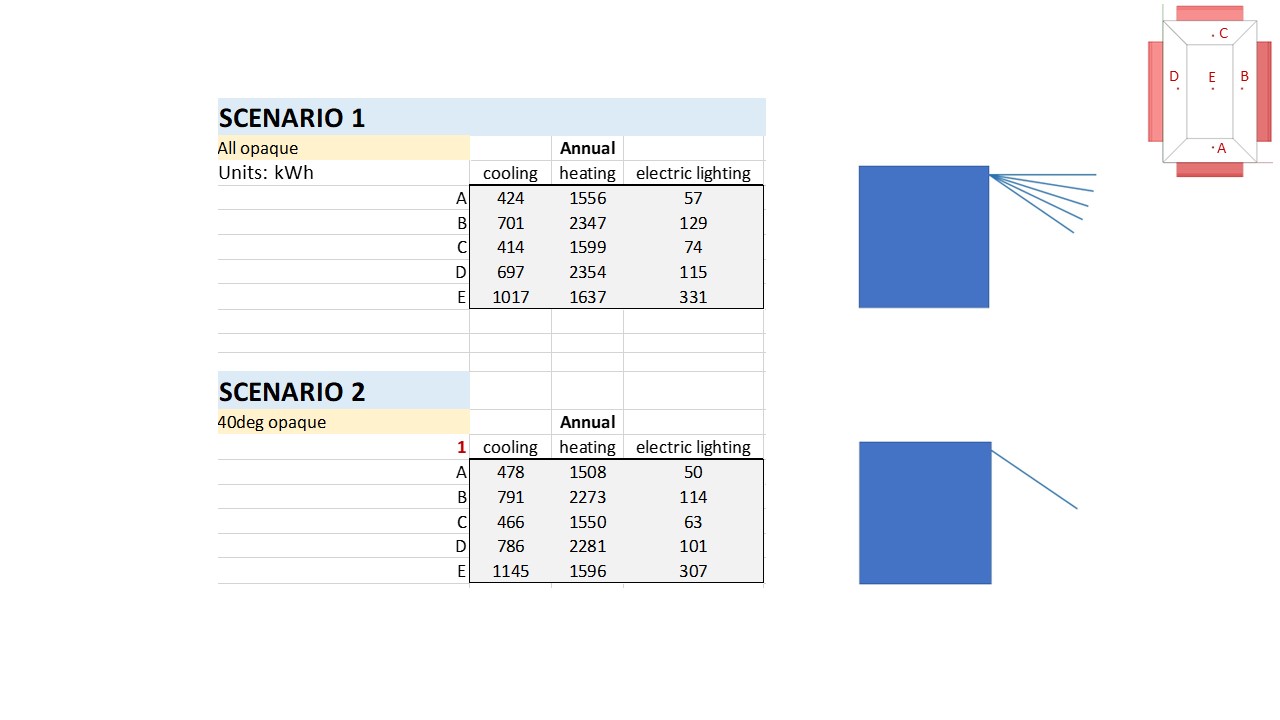How to define fully opaque shades?
Hi,
I modelled two scenarios with fully opaque shades (the first with five facade shades and the second with only one shade at 40 degrees). I expected to have the same cooling energy. But the first scenario in Zone A is 424 kWh, while the second one is 478 kWh. Why are the results different for one shade above another shade? They should be the same.

Thanks, Berrak





@Berrak it looks like your image didn't attach correctly. Can you please try to attach the image again?
Hi @aaron, Thank you for your reply. I have edited the image. I think you can see it now.